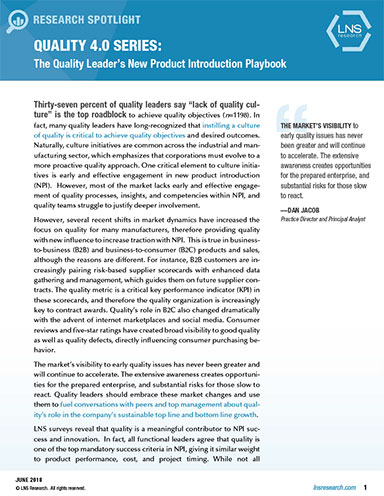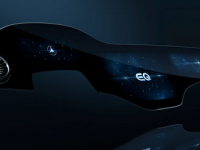The Quality Leader’s New Product Introduction Playbook
The market's visibility to early quality issues has never been greater and will continue to accelerate. The extensive awareness creates opportunities for the prepared enterprise, and substantial risks for those slow to react.

January 14, 2019
Thirty-seven percent of quality leaders say “lack of quality cul-ture” is the top roadblock to achieve quality objectives (n=1198). In fact, many quality leaders have long-recognized that instilling a culture of quality is critical to achieve quality objectives and desired outcomes.
Naturally, culture initiatives are common across the industrial and man-ufacturing sector, which emphasizes that corporations must evolve to a more proactive quality approach. One critical element to culture initia-tives is early and effective engagement in new product introduction (NPI). However, most of the market lacks early and effective engage-ment of quality processes, insights, and competencies within NPI, and quality teams struggle to justify deeper involvement.
However, several recent shifts in market dynamics have increased the focus on quality for many manufacturers, therefore providing quality with new influence to increase traction with NPI. This is true in business-to-business (B2B) and business-to-consumer (B2C) products and sales, although the reasons are different.
For instance, B2B customers are in-creasingly pairing risk-based supplier scorecards with enhanced data gathering and management, which guides them on future supplier con-tracts. The quality metric is a critical key performance indicator (KPI) in these scorecards, and therefore the quality organization is increasingly key to contract awards. Quality’s role in B2C also changed dramatically with the advent of internet marketplaces and social media. Consumer reviews and five-star ratings have created broad visibility to good quality as well as quality defects, directly influencing consumer purchasing behavior.
The market’s visibility to early quality issues has never been greater and will continue to accelerate. The extensive awareness creates opportuni-ties for the prepared enterprise, and substantial risks for those slow to react. Quality leaders should embrace these market changes and use them to fuel conversations with peers and top management about qual-ity’s role in the company’s sustainable top line and bottom line growth.
Fill out the information below to download the resource.
Latest News









